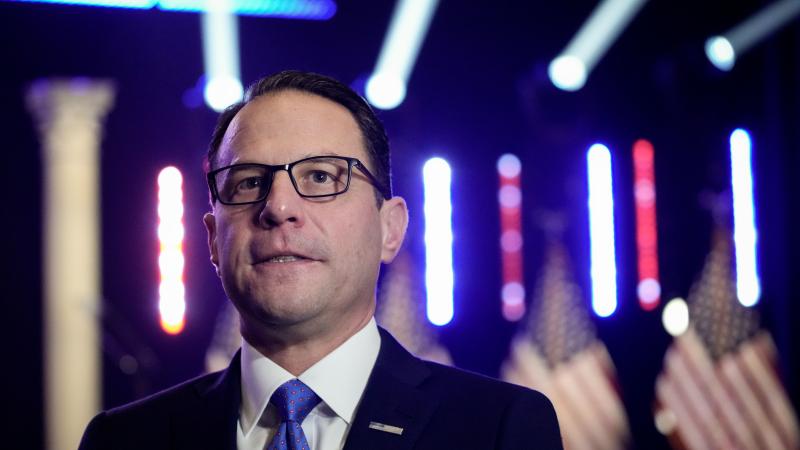Island tries to rely 100% on renewable power grid but it doesn't work more than 15% of the year
Easier Said Than Done: The island of El Hierro set out in 2015 to be 100% powered by wind and hydroelectric storage. Instead, renewable energy has never produced more than 15% of the island's needs.
Since January 2022, Francis Menton has proposed on his “Manhattan Contrarian” blog an interesting idea regarding the concept of transitioning the electric grid to run entirely without fossil fuels: It might be a good idea that if nations across the world are committing so much money on this transition, it might be a good idea to demonstrate with a pilot project somewhere on Earth that it will actually work.
The International Energy Agency, a Paris-based autonomous intergovernmental organisation, estimates that global spending on clean energy transition away from fossil fuels to be $1.2 trillion since the start of the pandemic. This doesn’t include investments prior to 2020.
Menton is a free-market proponent who had a career in law spanning more than 40 years, including 31 years as a partner at the law firm Willkie Farr & Gallagher LLP.
“Before embarking on ‘net zero’ for a billion people, how about trying it out in a place with, say, 10,000, or 50,000, or 100,000 people – see if it can actually work and how much it will cost?” Menton wrote. In other words, he explained, take a small city and power its electricity grid entirely on wind, solar and energy storage for a full year without any kind of baseload backup from fossil fuels.
“I’ve been banging that drum for a long time. It's incredible to me that people think you're going to convert the world to an entirely new energy system, and nobody has ever done a demonstration project to show that it can be done. So we're gonna use 8 billion people as the guinea pig,” Menton told Just The News.
El Hierro
The closest Menton could find to such a project is the island of El Hierro. Nestled in the Canary Islands off the west coast of Africa, El Hierro embarked on a quest to become powered 100% by wind and pumped storage.
Pumped storage is a form of hydroelectric power that uses elevation to store water. It consists of two reservoirs, one placed considerably higher than the other. During periods of surplus energy production, (when more electricity is produced than being consumed) the extra power is used to power pumps to lift water from the lower reservoir to the higher one. When the energy is needed, the water is drained into the lower pool and the flow of water turns generators, just like in a hydroelectric dam.
El Hierro never set out to demonstrate that the rest of the globe could transition entirely to a grid powered by renewable energy, but it did promote itself as the 100% renewable island. It has a population of approximately 11,000 people, and it provides information about its electricity generation sources on its website. The Island's data made it useful for looking at how such a project as Menton proposes would go.
There are 8,760 hours in a year, and 8,784 in a leap year. In 2020, a leap year, the island was powered 100% with wind and pumped storage for 1,293 hours out of the year. That comes out to a mere 14.7% of the island's energy needs. In 2021, it managed to hit 1,328 hours, and in 2022, it dropped down to 1,008, meaning that only 11.5% of the island's energy needs were met by "green" power. For the other hours of the year, the island’s electricity supply was generated in part by diesel-powered generators.
EuroNews.com recently reported that the island managed to go 28 consecutive days using only wind and water power, but it provides no data on the dates and times of this achievement. The most recent data on the website stops at 2022, and it only provides monthly figures. Just The News reached out to EuroNews, to ask about the source of the figure, as the article doesn’t specify it. EuroNews did not respond.
Menton pointed out that El Hierro’s total 100% renewable hours dropped in 2022. There could be a number of reasons for that, including drought. Menton said it’s also possible, because wind turbines and hydroelectric systems degrade over time and produce less power, that that might also be responsible for reducing the total power generated by those systems.
Water power
Other places held up as models for 100% renewable energy often utilize large amounts of hydroelectric power, such as Uruguay. The World Economic Forum declares that the country runs 98% on renewable energy, and the New York Times Magazine did a glowing write-up last year, holding the country up as a leader in the energy transition.
Contradicting the WEF and Times' endorsements, a group of consultants in the energy sector published on the Substack newsletter “Doomberg” an analysis of the country’s energy mix and noted that nearly 20% of its power comes from fossil fuels. Uruguay also gets 37% of its electricity from hydroelectric dams. Hydroelectric is a power source that doesn’t produce carbon dioxide emissions, but it requires geology with steep elevation drops, limiting its use in many places in the world. Uruguay has some of the highest per-capita levels of electricity generated from hydroelectric in the world.
In the West, hydroelectric projects also face stiff opposition from environmentalists, making them difficult to permit and finance. The Biden administration is currently considering removing four dams on the Snake River in Idaho due to their impacts to salmon populations.
Uruguay also has a low per-capita GDP, ranking 47th on the International Monetary Fund’s global list, so its industrial energy consumption is low. This matters because Menton’s proposed project is a very low bar to reach. Electricity is only about 20% of the total energy people consume globally. The rest is transportation and heating, which includes energy-intensive heavy industry.
Under Menton's hypothesis, if there were a successful 100% renewable energy demonstration project powering an electricity grid entirely with wind, solar and energy storage, such as pumped storage and batteries, it would still provide only one-fifth of the total energy that people consume.
The Facts Inside Our Reporter's Notebook
Links
- Manhattan Contrarian
- $1.2 trillion since the start of the pandemic
- demonstrate with a pilot project somewhere on Earth that it will actually work
- embarked on a quest to become powered 100%
- Pumped storage
- population of approximately 11,000 people
- on its website
- powered 100% with wind and pumped storage
- recently reported that the island managed to go 28 consecutive days
- New York Times Magazine
- Doomberg
- nearly 20% of its power comes from fossil fuels
- requires geology with steep elevation
- stiff opposition from environmentalists
- removing four dams on the Snake River
- ranking 47th on the International Monetary Fundâs global list
- 20% of the total energy people consume globally
- transportation and heating
















